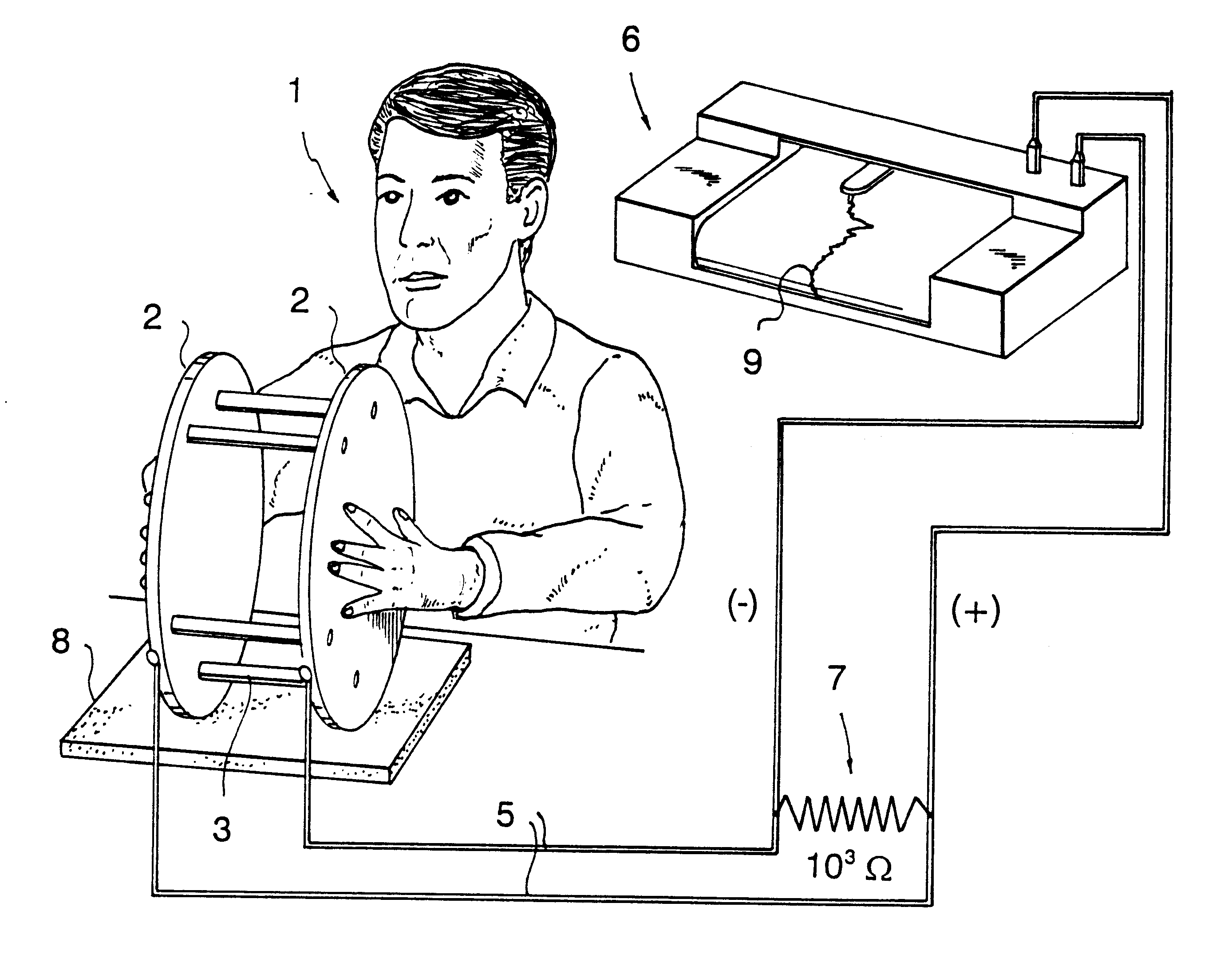Method and apparatus for detecting, recording and analyzing spontaneously generated transient electric charge pulses in living organisms
a transient electric charge and living organism technology, applied in the field of devices and methods for detecting and recording specific types of bioelectric pulses, can solve the problems of difficult to provide a non-living model of living systems, difficult to measure when, and confusion of readings
- Summary
- Abstract
- Description
- Claims
- Application Information
AI Technical Summary
Benefits of technology
Problems solved by technology
Method used
Image
Examples
example 1
Linkage with Cell Membrane Porosity: Addressing the question of how and where the CDP pulses originate within the living system can be done with utilization of perturbation kinetics, which is most easily carried out in plant material.
The influence of known quantities of microwave energy on the CDP pulses originating in 5 cm long stem sections from living Impatiens plants was examined using small, cylindrical aluminum electrodes 12 cm long and 0.64 cm diameter with flat semi-polished tissue-contacting ends.
These electrode probes were horizontally mounted on a lab bench covered with polyethylene film. The ends of freshly-excised plant sections were placed with the basipetal end contacting the cathode and the acropetal end the anode end. With this orientation the mean base line Pa level was determined from 8 non-exposed sections to be 0.40.+-.0.08 microamps.
During microwave exposure the stem sections were placed horizontally in a microwave oven which was determined calorimetrically to ...
example 2
Reaction-Diffusion Patterns: One can obtain some idea of the transport properties by examining the effect of reaction product formation at the electrode contact sites. With rapidly repeated hand traces one can detect a change in the Pa level due to feedback inhibition consistent with a buildup of reaction products in the epidermal tissue.
The results in FIG. 8 are from a 60 minutes test during which CDP traces were taken every 2 minutes. At the onset of this test (0-15 min.), the rapidly changing Pa levels are characteristic of spatio-temporal, self-organized reactions far from equilibrium and taking place at solid surfaces (ref.: G. Ertl, "Oscillatory kinetics and spatio-temporal self-organization in reactions at solid surfaces", Science, 254, (1991) pp.1750-1755). About 16 minutes into the test the Pa values became negative and continued with this polarity reversal until the end of the test period, a clear indication of the buildup of reaction products forming a local reservoir of ...
example 3
Evidence for Electrochemical Involvement: It is quite apparent from the consistent form of the dissipation function discussed above that the kinetics involved in producing CDP pulses in the metal matrix of the electrodes is not a random process. If this is connected to electrochemical processes then one would expect the rate constant k to be dependent on temperature according to the Arrhenius Equation:
K=A[exp.(-E / RT)] (8)
where E is the Gibbs free energy of activation, R is the Boltzman constant, T the absolute temperature, and k is the reaction rate constant, which in a CDP trace is equivalent to the dissipation constant in the equation. To examine the electron reaction dynamics within the matrix of the aluminum electrodes, data was plotted from routine hand traces taken at the same period of day over two months, with differing ambient temperatures of the metal electrodes, ranging from 21.degree. C. to 27.degree. C. Six data points were taken from each individual CDP trace, starting...
PUM
 Login to View More
Login to View More Abstract
Description
Claims
Application Information
 Login to View More
Login to View More - R&D
- Intellectual Property
- Life Sciences
- Materials
- Tech Scout
- Unparalleled Data Quality
- Higher Quality Content
- 60% Fewer Hallucinations
Browse by: Latest US Patents, China's latest patents, Technical Efficacy Thesaurus, Application Domain, Technology Topic, Popular Technical Reports.
© 2025 PatSnap. All rights reserved.Legal|Privacy policy|Modern Slavery Act Transparency Statement|Sitemap|About US| Contact US: help@patsnap.com



